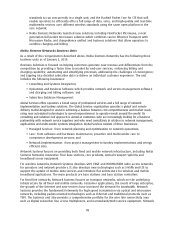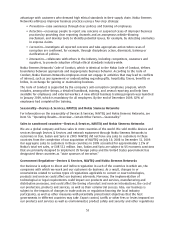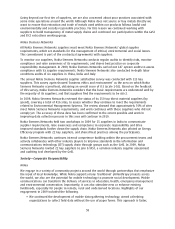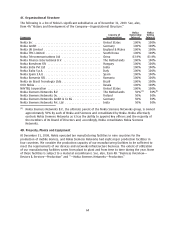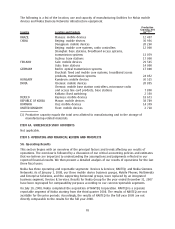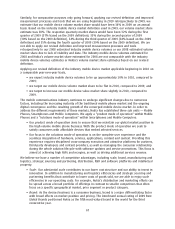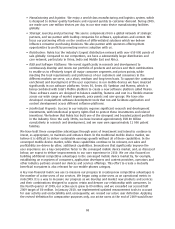Nokia 2009 Annual Report Download - page 61
Download and view the complete annual report
Please find page 61 of the 2009 Nokia annual report below. You can navigate through the pages in the report by either clicking on the pages listed below, or by using the keyword search tool below to find specific information within the annual report.cheaper and more effective. Nokia’s mobile datagathering technology has, for example, been
used for the institution of civil registration systems essential for good governance in post
conflict countries, as well as deployed to support humanitarian work and aid those working in
the agriculture and health sectors. In Brazil, the technology has been used to monitor
outbreaks of disease and the effectiveness of prevention programs in the city of Manaus.
During 2009, realtime and accurate GPS data helped reduce the incidence of dengue fever in
Manaus by enabling the identification and eradication of dengue mosquito larvae before they
could transmit the disease.
• Nokia formally introduced Nokia Education Delivery, a software solution that enables the
delivery of interactive multimedia learning materials and enhanced teaching skills to the
classrooms of schools in the developing world using mobile technology. The solution has been
designed especially for people living in remote areas, where access to educational resources is
scarce. It is based on an earlier, satellitebased system. However, as mobile networks have
spread, we have been able to migrate the concept to mobile networks, lowering costs and
complexity in implementation. In 2009, Nokia Education Delivery was adopted by the
education systems in the Philippines and Tanzania, with trials also taking place in Chile.
• We continued to support a variety of community initiatives around the world, with activities
underway in over 40 countries. These projects are tailored to the needs of local communities
and address issues such as education, employability and health, and encourage young people
to contribute to their local communities.
Nokia Siemens Networks
During 2009, Nokia Siemens Networks provided assistance to people affected by natural disasters in
the wake of flooding in Manila and Turkey, the earthquakes in Indonesia and Italy, and donated funds
to international relief organizations. The company also demonstrated an emergency communications
package, developed in collaboration with the Red Cross organization, which can be used to provide
emergency communications when disaster strikes and disrupts existing communications networks.
The work on this solution continues this year.
In 2009, Nokia Siemens Networks continued to provide education and capacity building activities
throughout the world through a variety of projects, including educational activities for the
handicapped, the elderly and the socially or economically disadvantaged. Many of these activities
were run by Nokia Siemens Networks employee volunteers. Altogether, 2 100 volunteer hours were
reported in 2009. A large proportion of the education work was invested in nonR&D university
partnerships and vocational training activities, for example in providing scholarships to women in
engineering in India and Indonesia.
Nokia Siemens Networks continues developing solutions supporting sustainable development in
emerging markets. For example, during 2009 Nokia Siemens Networks continued to develop Village
Connection, a costefficient solution that enables operators to extend their reach to remote villages.
In 2009, Nokia Siemens Networks continued its collaboration with London Business School and
University of Calgary to produce the ‘Connectivity Scorecard’. The scorecard assesses performance
against approximately 30 indicators of connectivity—including broadband, fixedline, mobile and
computing technologies—that contribute to a country’s social and economic prosperity.
Environment—Corporate Responsibility
Environmental management at Nokia
Nokia aims to be a leading company in environmental performance. Our vision is a world where
everyone being connected can contribute to sustainable development.
59


